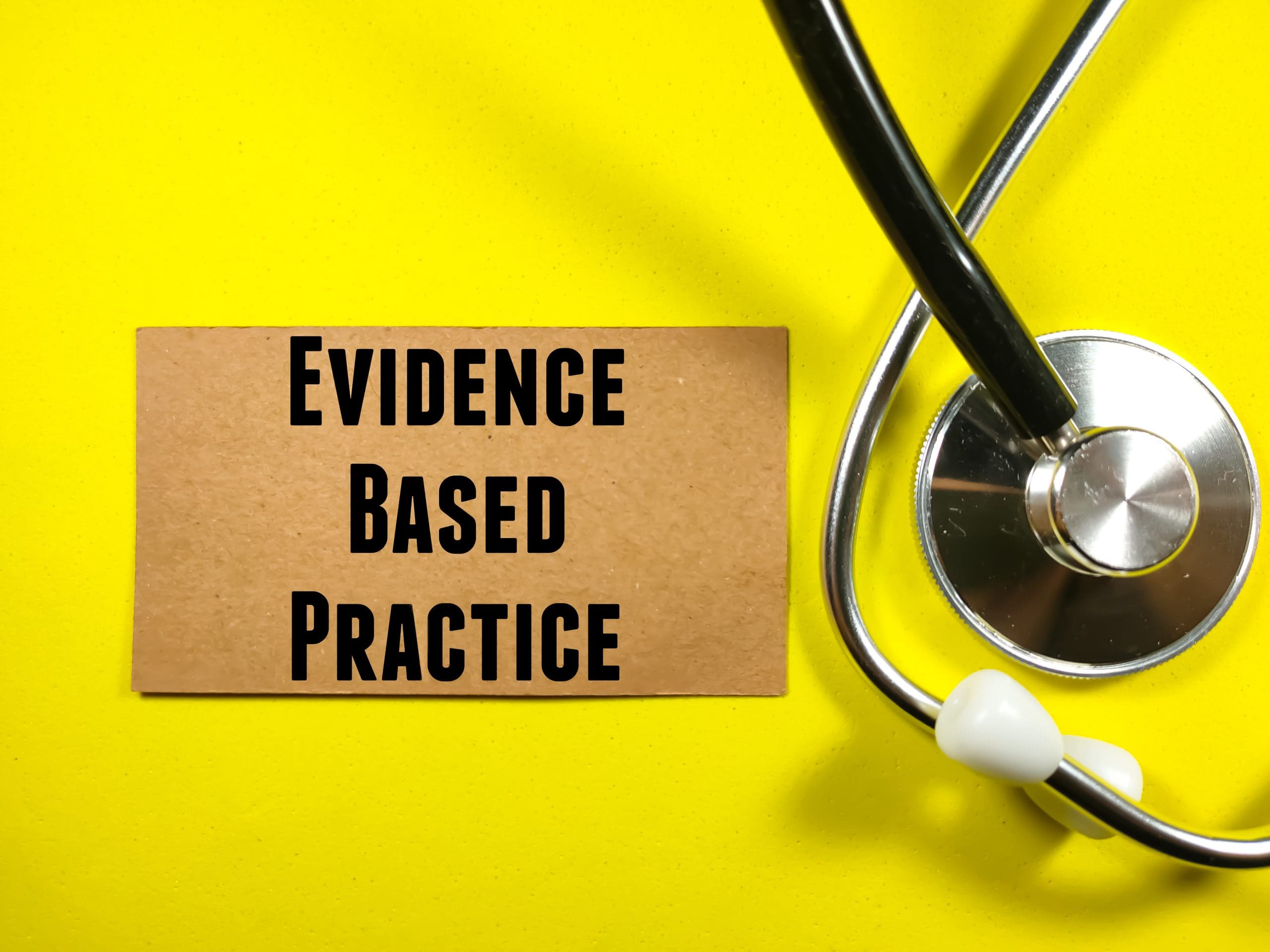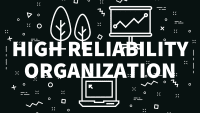The healthcare environment is more complex than ever before, which has only been exacerbated by the COVID-19 pandemic. Evidence supports that nurse and clinician performance and decision-making affects quality outcomes (Melnyk & Fine-out-Overholt, 2023). Therefore, nurse leaders should create a vision and strategy for their department, facility, or system linking evidence-based goals and actions to the mission of the organization. Data analysis of key performance indicators must drive evidence-based practice (EBP) or process improvement changes which contribute to high reliability and achievement of the Quintuple Aim. The Quintuple Aim, as defined by the Institute of Healthcare Improvement, included 1. Improved patient experience; 2. Better outcomes; 3. Lower costs; 4. Clinician well-being; and 5. Health equity. (Bachynsky, 2020; Itchhaporia, 2021). In addition, leaders must demonstrate competencies in leading EBP, as well as business skills and principles to improve patient, clinician, and organizational outcomes. Today’s leaders must manage a diverse workforce, build infrastructures to support EBP uptake, and incorporate the concepts of a healthy work environment while advocating for nurses to practice to the full scope of their license.
Nursing Strategy Phase One
The Advancing Research and Clinical Practice with Close Collaboration (ARCC) model is an organizational change model that provides leaders with a compass to navigate the organization’s culture and readiness for change (Melnyk & Fineout-Overholt, 2023). The first step in strategic planning is to assess organizational strengths and weaknesses in conjunction with identifying barriers and facilitators to evidence-based care. Leaders can then systematically build infrastructures to support the implementation and sustainability of best practices and processes to improve patient, clinician, and organizational outcomes and promote reliability (Melnyk & Fineout-Overholt, 2023). This project began with an organizational assessment that included a strengths, weaknesses, opportunities, and threats (SWOT) analysis that led to the focus areas that aligned with the overarching system vision, mission, and goals. In today’s complex healthcare environment, stakeholders must work together as a team to achieve optimal health outcomes. Therefore, the Convergent Care Theory was utilized to categorize and organize the focus areas to transform nursing practice through teamwork and interprofessional collaborations (Wei, 2022). Furthermore, a business plan was crafted based on the focus areas to provide the human resources and infrastructures necessary to support an evidence-based decision-making framework.
Kotter (2014) explains that traditional, hierarchical, static organizational structures that operate singularly were not built for constantly changing environments. Kotter advocated for a new model, defined as a ‘dual operating system’ that includes the presence of sound processes to address day-to-day operations while simultaneously deploying a mobile force of specialized leaders who manage complex, challenging issues. These mobile forces, with expertise in EBP, work in tandem with the organization’s traditional committee structures to make evidence-based care happen in an accelerated manner (Kotter, 2014). The Center for Clinical Inquiry (The Center) represents this model and provides the infrastructures to support staff in using an EBP methodology to solve problems (Gorsuch et al., 2020). The human resources needed to lead The Center included a System Director of Evidence-based Practice (SD EBP) and System Director Nursing Professional Practice (SD NPP). Additionally, the manager for Nursing Data Quality and clinical leaders comprising—Clinical Nurse Specialists (CNS) and Registered Nurse (RN) Educators—were realigned into The Center to utilize an evidence-based approach to solving problems. The Center’s vision is to promote and support clinical inquiry to elevate nursing professional practice. Additionally, an important organizational consideration was the horizontal alignment between nursing administrative and clinical leaders, providing a focused nurse-led collaborative to improve patient, clinician, and organizational outcomes.
Nursing Strategy Phase Two
In addition to the system administrative leaders within The Center, one focus area was to build the clinical leadership team and expand the CNS and RN Educator positions as supporting structures within The Center. A CNS internship program was developed in partnership with a local university to prepare registered nurses for a CNS role. The program recruited four nurses within the organization to pursue advanced education leading to CNS licensure. The program provided tuition support, employment as a CNS intern, and mentorship by seasoned CNSs at the organization. The goal of the CNS internship is to increase CNS positions within the organization and build an EBP culture to improve patient outcomes, nurse satisfaction, retention, and professional development. This innovative approach provides CNS interns an opportunity to evaluate nursing practice, identify gaps in care, and mentor novice nurses at the bedside under the guidance of a CNS mentor or preceptor. Additionally, four vacant nursing positions were converted to RN Educator roles, which provided the organization with a total of six hospital-based educators. The goal of the RN Educators is to collaborate with nursing administrative leaders and CNSs to design, implement, and evaluate educational activities for best practices or processes. RN Educators also support frontline staff by rounding on nursing units identifying clinical issues and educational needs. These clinical leaders are the specially-trained mobile forces, who as Kotter (2014) references, systematically manage complex, challenging issues.
The second focus area of the strategy was to build EBP knowledge and skills of staff through a formalized skills-building program. While awaiting the educational sessions, two EBP Specialists—nurses with advanced skills in EBP methodology—were recruited to work part-time to bridge the gap while awaiting widespread EBP mentor development. The Helene Fuld Health Trust National Institute for Evidence-Based Practice in Nursing and Healthcare (Fuld Institute) was selected to provide a 5-day EBP immersive experience to learn the step-by-step EBP process as well as effective strategies for implementing EBP in clinical settings. The Center hosted two large interprofessional immersions over the past year, educating more than 150 health system employees. Quality data drove the topics which were then matched to the skill set of the participant enhancing their learning experience while positively impacting patient, clinician, and organizational outcomes.
In addition to the human resources in The Center, which support staff in using an EBP methodology to solve problems, there have been infrastructures put into place which allow for organization, prioritization, implementation, and sustainment of EBP. These infrastructures include: a centralized repository, internal website, and an Evidence-Based Practice and Research Council (EBPRC). A centralized repository was created in REDCap to provide intake for clinical inquiry, a step-by-step guide, with tools embedded, to apply EBP methodology, and determination of return on investment (ROI) for each initiative. The repository organizes and displays the current state of initiatives within the organization. Additionally, reports may be generated that show all components of the EBP process with ROI calculated. Furthermore, the repository is utilized monthly to prioritize and disseminate EBP to plan for implementation, evaluation, and sustainment at the EBPRC. The EBPRC is an infrastructure to ensure that clinical practices and processes of care are evidence-based and are of the highest caliber through the integration of best evidence combined with clinical expertise and patient values.
Nursing Strategy Phase Three
As we enter a new year, planning is underway to further build and refine the infrastructures within The Center. Based on the evidence, leadership is essential to facilitate the uptake of EBP (Gorsuch et al., 2020). Knowing this, the focus area will be the development of nursing leaders through a nurse-led partnership with uLeadership, LLC®. Human-Centered Leadership in Healthcare™: Essentials is a contemporary approach to nursing leadership virtual program was adopted to educate nurse leaders on self-awareness, self-compassion, self-care, and mindfulness, as well as provide a change management structure for the nursing department (Leclerc et al., 2020). Another well-known facilitator of EBP is staff engagement, therefore, the second main focus area will be the implementation of an evidence-based professional governance structure. The third and final main focus area will be the nurse-led collaboration between nursing and clinical informatics. Building and sustaining these infrastructures is essential to improving patient, clinician, and organizational outcomes in a constantly changing healthcare environment.
Editor’s Note: We discovered a typographical error in the photo of the print version of this article, it has been updated in the digital edition and above. We apologize for the error.
References:
Bachynsky, N. (2020). Implications for policy: The Triple Aim, Quadruple Aim, and interprofessional collaboration. Nursing Forum, 55(1), 54-64. Doi: 10.1111/nuf.12382
Gorsuch, P. F., Gallagher-Ford, L., Thomas, B., Melnyk, B. M., & Connor, L. (2020). Impact of a formal educational skill-building program based on the ARCC model to enhance evidence-based practice competency in nurse teams. Worldviews on Evidence-based Nursing, 17(4), 258-268.
Leclerc, L., Kennedy, K., & Campis, S. (2020). Human-centered leadership in health care: An idea that’s time has come. Nursing Administration Quarterly, 44(2), 117–126. https://doi-org.proxy.library.kent.edu/10.1097/NAQ.0000000000000409
Itchhaporia, D. (2021). The evolution of the quintuple aim. Journal of the American College of Cardiology. 78(22), 2262-2264. Doi: 10.1016/j.jacc.2021.10.018
Kotter, J. P., (2014). Accelerate: Building strategic agility for a faster-moving world. Harvard Business Review Press.
Melnyk, B. M., & Fineout-Overholt, E. (2023). Evidence-based practice in nursing & healthcare: A guide to best practice (3rd ed.). Wolters Kluwer.
Wei, H. (2022). The development of evidence-informed Convergent Care Theory: Working together to achieve optimal health outcomes. International Journal of Nursing Sciences, 9(1), 11-25. https://doi.org/10.1016/j.ijnss.2021.12.009

























